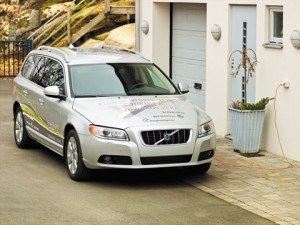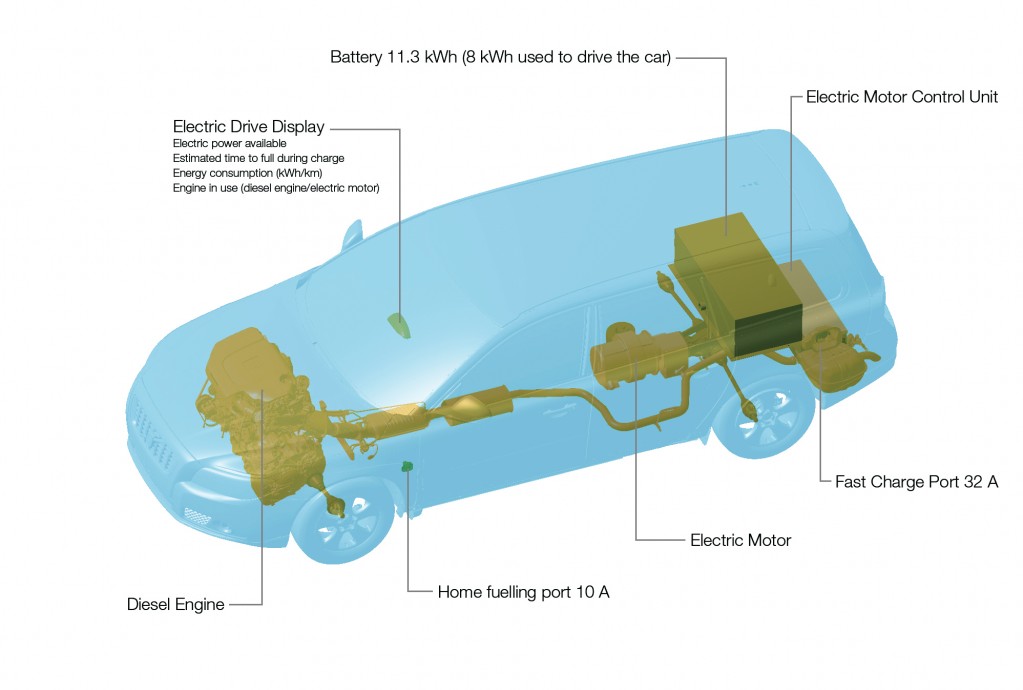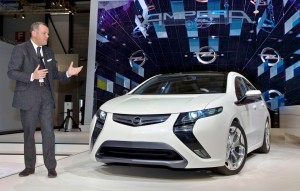
A line of Volvo plug-in hybrids is coming in 2012, just in time for Super Credits from the EU.
Volvo has become the latest European manufacturer to join the hybrid parade, with a joint- venture program with the Swedish power company Vattenfall. Production of Volvo “plug-in” hybrids are coming in 2012. This is well behind the auto industry’s hybridization, which has been underway for more than a decade now, with Toyota producing its third generation of Prius, while Honda is on its second generation Insight.
“There is no doubt that the environmental issue is at the very top of Volvo Cars’ product development agenda right now,” says Stephen Odell, CEO of Volvo Cars. “Carbon dioxide emissions from our cars will be drastically reduced by the plan we are now implementing and our aggressive electrification strategy will put us in a leading position when it comes to environmentally optimized passenger transport.”
What Odell is leaving out is the quite visible hand of European regulation governing carbon dioxide, which is forcing all makers to downsize cars, and produce electric cars to get “Super Credits” to allow them to continue to produce vehicles that resemble the ones we know today. More than a dozen hybrid and full electric vehicle models are slated for release by 2010. This includes new vehicles from Ford, Daimler, BMW, Porsche, Audi, Volkswagen, and Opel.
EU and CO2
The European Union is moving ahead — over automakers’ protests — with new CO2 standards for passenger cars that dictate a reduction in average CO2 emissions from new cars to 120 g/km. Fewer than 9% of the cars sold in the EU in 2006 met this level of emissions. The costs of moving towards CO2 of 120 g/km by 2012 through vehicle technology are estimated at about €3,600 ($5,108) on an average per car. (The EU does not recognize light trucks as we do in the U.S., just cars and commercial vehicles. And naturally there are complicated credits and exemptions or special treatment for cars bought by the wealthy.)
While there is an implementation phase-in for the new EU regulation, it appears on the surface extremely ambitious — 65% of new cars will comply with requirements in 2012 when the Volvos appear; 75% in 2013; 80% in 2014 and 100% in 2015. Since CO2 emissions are directly proportional to the amount of any carbon-based fuel that is burned, CO2 standards can be looked at as fuel economy requirements. But here it is difficult to make clear comparisons since Europe calculates fuel economy on liters of fuel consumed per 100 kilometers driven, different units and the opposite of our miles per gallon method.

The powertrain of the Plug-in hybrid demonstration vehicle contains two power sources – an electric motor located at the rear and a diesel engine at the front. Energy is stored in the lithium-ion battery, which has the capacity to drive the vehicle up to 50 kilometers on one charge. A demonstration fleet of the Plug-in hybrids will be tested during 2009 to gather information about the customers’ demands on performance, driving experience and fuel options.
To try and put this in perspective and see what it means, take a mid-sized sedan. A Volvo 60-series with a gasoline engine emits 234g/km of CO2 — twice the proposed standard. The diesel version is rated at 199 g/km. This is for car that is relatively small by American standards.
Volvo Cars has seven car models that can be specified in their most efficient form, the so-called DRIVe configuration. A DRIVe badge is attached cars in the range that have extremely low carbon dioxide emissions. These cars have been specially designed to optimize fuel consumption, with aerodynamic and rolling resistance tweaks, and small engines that shut down at idle. The most fuel-efficient variants are the C30, S40 and V50 1.6D DRIVe, with fuel consumption of 3.9 liters/100 km (104 grams CO2/km). And that’s the most efficient in compact cars. They only account for a small proportion of sales at the moment.
Green Cars Require Huge Subsidies
While all makers are claiming the market wants to go green, there is scant evidence that the average car buyer does, and directly contradictory evidence that consumers will pay for green cars in both European and U.S. surveys and actual purchase decisions. A clear warning sign to me of what the real market situation is comes from the near universal calls of automakers for government subsidies to make the dream green machines saleable.

Opel reveals an electric car and the production plans at same time.
To stay with Europe, consider what Opel want to speed auto electrification:
- €5000 incentive ($7094 US!) for consumers to purchase this technology
- Exemption from Registration Tax and/or Annual Circulation Tax
- Accelerated depreciation to stimulate fleet buyers
- Free public parking on the street and free or reduced parking costs in parking lots
- Zero congestion charges (where applicable)
- Building code requirements that all new garages (residential or commercial) must have 220-240V outlets for vehicle recharging capability
- Grants or a tax credit for homeowners and owners of industrial, commercial and multi-residential units to install 220-240V outlets for easily accessible vehicle recharging (and install mini-meters on publicly accessible outlets for easy billing)
- Require utilities to go to “time of day” pricing to make overnight charging more economic
A Chevrolet or Opel Ampera version at an estimated $45,000 is virtually sale proof when competing against hybrids that cost half as much and deliver 50 mpg, hence the need for subsidies.
U.S. Follows EU
The U.S. is also in the process of setting a CO2 standard as part of President Obama’s proposed National Fuel Efficiency Policy, which adopts uniform federal standards to regulate both fuel economy and greenhouse gas emissions. While the outcome is unknown, what is known is that the U.S. fleet must average 35.5 mpg by 2016 with cars at 39 mpg. One estimate says that to get to the 120 gram CO2 limit in Europe, our CAFE would have to go to 48 mpg. But beware of all the numbers being bandied about. MPG numbers are given to much manipulation, especially when it comes to CAFE and or electric vehicles. See 100 MPG: Holy Grail or Hype?
One such manipulation is the numbers used to set Corporate Average Fuel Economy are not the numbers that are posted on the window sticker. Whether consumers revolt when they see what this means in terms of vehicle size, features and power, remains to be seen. But I can’t help but think of a lesson in automotive history. The abstract safety policy debates of the started in the 1960s, led to the seat belt interlock law in 1974 that disabled a car’s starter motor unless the seat belt was fastened. Congress was deluged with hate mail, and the law was repealed in a matter of months.
